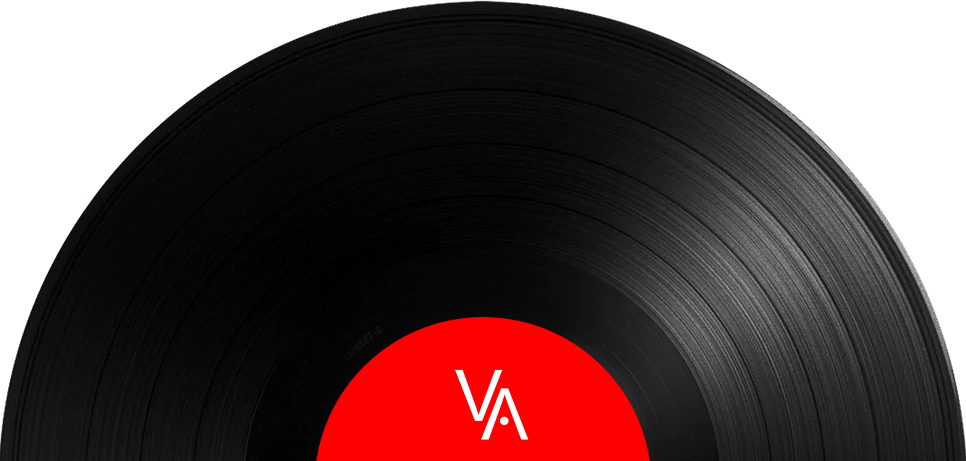
From Elvis in Memphis is Elvis Presley's 10th studio album, released in 1969. It was recorded at American Sound Studio in Memphis, and Elvis was backed by the studio's house band, known as The Memphis Boys. The album peaked at number 13 on the Billboard 200 and number two on the country charts. The single In the Ghetto climbed to number three on the Billboard Hot 100 and the album would eventually be certified gold by the Recording Industry Association of America, in 1970. It is ranked number 190 on Rolling Stone magazine's 2003 list of the 500 greatest albums of all time.
This record was recorded after a string of soundtrack albums, meant to accompany Elvis' film career, failed to perform as well as Elvis' manager, Colonel Tom Parker, thought they would (and even though three of them reached number one and produced several of his biggest hits, including 1961's Can't Help Falling in Love and 1962's Return to Sender). In 1968 Parker arranged for Elvis to record a Christmas TV special for NBC, and while he initially wanted Elvis to sing only Christmas carols the show's producer, Steve Binder, convinced Elvis to perform his own songs instead. The resulting high ratings of the TV special and the success of its accompanying LP helped re-establish the singer's popularity. Presley supposedly told Binder he would never again "sing another song that I don't believe in. I'm never going to make another movie that I don't believe in."
RCA Records, where Elvis had recorded everything previous to this record and whose policy it was to insist their artists record only in their own studios, agreed to the change of venue but sent their own personnel to American Sound to oversee the proceedings. Recording began on January 13, 1969. Presley was nursing a cold, but he rose to the challenge and the first day's session produced Long Black Limousine, Wearin' That Loved On Look and a few songs that didn't make the final LP cut. The next day I'm Moving On and Gentle on My Mind were recorded, although Elvis left the studio before completing the vocal take for the latter in order to rest his voice. He did not return for a couple of days because his cold worsened, so the The Memphis Boys recorded backing tracks for subsequent sessions. When Elvis returned, on January 20, he recorded a final version of the Mac Davis tune, In the Ghetto, after 23 unsatisfactory takes. He also finished the vocal track for Gentle on My Mind. On January 22 he recorded I'll Hold You in My Heart (Till I Can Hold You in My Arms) and Suspicious Minds, which did not appear on the album but were released as a single. Elvis then took a break from recording, returning in mid-February to record True Love Travels on a Gravel Road, Power Of My Love After Loving You and Do You Know Who I Am? The rest of the album was finished over the next several days, and the addition of violas, cellos and French horns were added later.
Twelve tracks were selected for the LP, from a total of 31 that were recorded. The lead-off track was the uptempo Wearin' That Loved On Look. The sound was definitely a departure for Elvis, and it's interesting to hear Reggie Young's guitar where Scottie Moore's would normally be. Maybe "odd" is a better word. But Young does a great job, and there is some deft fingering throughout. A nice, clean sound that I'm sure Scotty approved of.
The entire album is well recorded, although it does sound somewhat dated all these years later. I admit to not having played it in decades, but I was happy to give it a listen, and while it's a soundscape from a long-ago era it remains a great sounding, vibrant record. Mobile Fidelity's treatment is restrained and respectful to the original, while adding some welcome breathing room to the original mix.
The album closes with In The Ghetto, which Elvis originally was not going to record because of the subject matter - poverty - which he thought would alienate his fans. In the end, however, it is one of his most defining and enduring songs Elvis ever recorded, selling over a million copies in the U.S. alone.
The album's cover is a still from the NBC TV special, featuring Elvis holding a red electric guitar and wearing a black leather suit with a red scarf around his neck - daring for the day. The LP would become one of American Sound Studio's best-known recordings and reached number two in England. Its success triggered a confrontation between RCA and American Sound. Elvis' usual producer, RCA's Felton Jarvis, was worried about not receiving a production credit and thereby losing control of Elvis' American Sound recordings. When, during In The Ghetto's first two weeks on the charts, its production was credited to Jarvis, Martin Lacker - a friend of Elvis who was instrumental in moving Elvis to American Sound for the From Elvis In Memphis sessions - called Billboard and had them list the credit to the session's actual producer, Chips Moman. Colonel Parker later asked Billboard to remove the production credit from the song entirely, saying that Elvis did not traditionally list production credits.
As part of the record's promotion Elvis was featured on the cover of Rolling Stone magazine. Inside, Peter Guralnick, the magazine's record reviewer at the time, described From Elvis In Memphis as "… unequivocally the equal of anything he has ever done." Other reviews were just as complimentary. Bruce Eder called it "one of the greatest white soul albums (and one of the greatest soul albums) ever cut", saying Elvis sounded "rejuvenated artistically (while) he's supported by the best playing and backup singing of his entire recording history."
A decent record all around. If you like to hear Elvis sounding better than ever, this is …
From Elvis in Memphis is Elvis Presley's 10th studio album, released in 1969. It was recorded at American Sound Studio in Memphis, and Elvis was backed by the studio's house band, known as The Memphis Boys. The album peaked at number 13 on the Billboard 200 and number two on the country charts. The single In the Ghetto climbed to number three on the Billboard Hot 100 and the album would eventually be certified gold by the Recording Industry Association of America, in 1970. It is ranked number 190 on Rolling Stone magazine's 2003 list of the 500 greatest albums of all time.
This record was recorded after a string of soundtrack albums, meant to accompany Elvis' film career, failed to perform as well as Elvis' manager, Colonel Tom Parker, thought they would (and even though three of them reached number one and produced several of his biggest hits, including 1961's Can't Help Falling in Love and 1962's Return to Sender). In 1968 Parker arranged for Elvis to record a Christmas TV special for NBC, and while he initially wanted Elvis to sing only Christmas carols the show's producer, Steve Binder, convinced Elvis to perform his own songs instead. The resulting high ratings of the TV special and the success of its accompanying LP helped re-establish the singer's popularity. Presley supposedly told Binder he would never again "sing another song that I don't believe in. I'm never going to make another movie that I don't believe in."
RCA Records, where Elvis had recorded everything previous to this record and whose policy it was to insist their artists record only in their own studios, agreed to the change of venue but sent their own personnel to American Sound to oversee the proceedings. Recording began on January 13, 1969. Presley was nursing a cold, but he rose to the challenge and the first day's session produced Long Black Limousine, Wearin' That Loved On Look and a few songs that didn't make the final LP cut. The next day I'm Moving On and Gentle on My Mind were recorded, although Elvis left the studio before completing the vocal take for the latter in order to rest his voice. He did not return for a couple of days because his cold worsened, so the The Memphis Boys recorded backing tracks for subsequent sessions. When Elvis returned, on January 20, he recorded a final version of the Mac Davis tune, In the Ghetto, after 23 unsatisfactory takes. He also finished the vocal track for Gentle on My Mind. On January 22 he recorded I'll Hold You in My Heart (Till I Can Hold You in My Arms) and Suspicious Minds, which did not appear on the album but were released as a single. Elvis then took a break from recording, returning in mid-February to record True Love Travels on a Gravel Road, Power Of My Love After Loving You and Do You Know Who I Am? The rest of the album was finished over the next several days, and the addition of violas, cellos and French horns were added later.
Twelve tracks were selected for the LP, from a total of 31 that were recorded. The lead-off track was the uptempo Wearin' That Loved On Look. The sound was definitely a departure for Elvis, and it's interesting to hear Reggie Young's guitar where Scottie Moore's would normally be. Maybe "odd" is a better word. But Young does a great job, and there is some deft fingering throughout. A nice, clean sound that I'm sure Scotty approved of.
The entire album is well recorded, although it does sound somewhat dated all these years later. I admit to not having played it in decades, but I was happy to give it a listen, and while it's a soundscape from a long-ago era it remains a great sounding, vibrant record. Mobile Fidelity's treatment is restrained and respectful to the original, while adding some welcome breathing room to the original mix.
The album closes with In The Ghetto, which Elvis originally was not going to record because of the subject matter - poverty - which he thought would alienate his fans. In the end, however, it is one of his most defining and enduring songs Elvis ever recorded, selling over a million copies in the U.S. alone.
The album's cover is a still from the NBC TV special, featuring Elvis holding a red electric guitar and wearing a black leather suit with a red scarf around his neck - daring for the day. The LP would become one of American Sound Studio's best-known recordings and reached number two in England. Its success triggered a confrontation between RCA and American Sound. Elvis' usual producer, RCA's Felton Jarvis, was worried about not receiving a production credit and thereby losing control of Elvis' American Sound recordings. When, during In The Ghetto's first two weeks on the charts, its production was credited to Jarvis, Martin Lacker - a friend of Elvis who was instrumental in moving Elvis to American Sound for the From Elvis In Memphis sessions - called Billboard and had them list the credit to the session's actual producer, Chips Moman. Colonel Parker later asked Billboard to remove the production credit from the song entirely, saying that Elvis did not traditionally list production credits.
As part of the record's promotion Elvis was featured on the cover of Rolling Stone magazine. Inside, Peter Guralnick, the magazine's record reviewer at the time, described From Elvis In Memphis as "… unequivocally the equal of anything he has ever done." Other reviews were just as complimentary. Bruce Eder called it "one of the greatest white soul albums (and one of the greatest soul albums) ever cut", saying Elvis sounded "rejuvenated artistically (while) he's supported by the best playing and backup singing of his entire recording history."
A decent record all around. If you like to hear Elvis sounding better than ever, this is …



